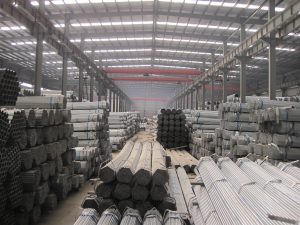Marginal consumption of steel is gradually recovering
In recent times, the steel industry has experienced a resurgence as the marginal consumption of black steel pipe begins to recover. After a period of decline, this positive trend has brought hope to manufacturers and stakeholders in the sector. This article delves into the factors contributing to this recovery and explores the implications for the industry as a whole.

Current Demand and Economic Factors
One of the primary drivers behind the recovery in marginal consumption of steel is the increased demand stemming from infrastructure projects and construction activities. Governments worldwide have been investing in large-scale infrastructure initiatives, such as bridges, roads, and public facilities, spurring the need for substantial amounts of steel. Additionally, the construction sector is experiencing growth, particularly in emerging economies, further driving steel consumption.
Moreover, economic growth in various regions has contributed to the recovery. With economies rebounding from the impacts of the global pandemic, industries such as manufacturing and automotive are witnessing increased steel usage. The manufacturing sector’s demand for square steel tube for sale has risen as production levels climb, driven by growing consumer confidence and improved export opportunities. Similarly, the automotive industry’s recovery has led to greater demand for steel, a vital component in vehicle manufacturing.
Government Policies and Technological Advancements
Government policies play a significant role in bolstering the steel industry’s recovery. Measures such as increased infrastructure spending, trade agreements, and import regulations aimed at protecting domestic steel manufacturers have contributed to the improved demand. Additionally, incentives for the adoption of sustainable practices and the promotion of steel-intensive projects have further stimulated steel consumption.
Technological advancements have also played a vital role in the industry’s recovery. Innovations in steel production processes, such as advanced manufacturing techniques and automation, have improved efficiency and reduced costs. This has made China hollow section tube a more attractive option for various applications, thus driving demand and consumption.
Challenges and Future Outlook
While the recovery in marginal consumption is promising, the steel industry continues to face challenges. Fluctuations in raw material prices, such as iron ore and coking coal, can impact production costs and profitability. Additionally, the industry faces competition from alternative materials and the need to address environmental concerns related to steel production.
Nevertheless, with the current positive trajectory, the future of the steel industry seems promising. Continued investments in infrastructure, economic growth, and technological advancements are expected to sustain the recovery in marginal consumption. The industry will likely witness further innovation and adaptation to meet evolving consumer needs and sustainability requirements. The gradual recovery of marginal consumption in the steel industry brings renewed optimism to China steel tube manufacturers and stakeholders. Increased demand from infrastructure projects, economic growth, supportive government policies, and technological advancements have all contributed to this positive trend. With challenges being addressed, the steel industry is poised for a resilient and prosperous future.
Tel: +86 18202256900 Email: steel@tjdpbd.com









